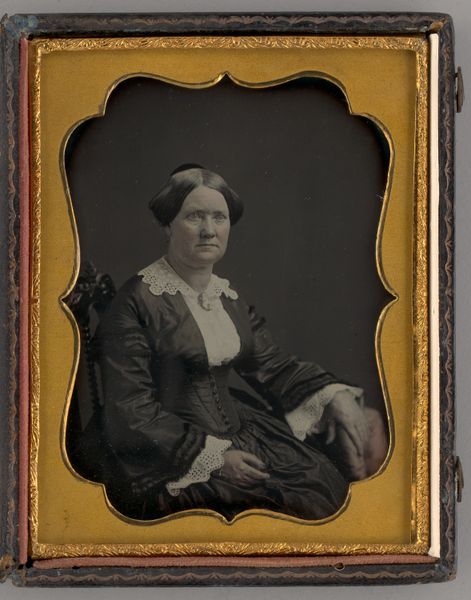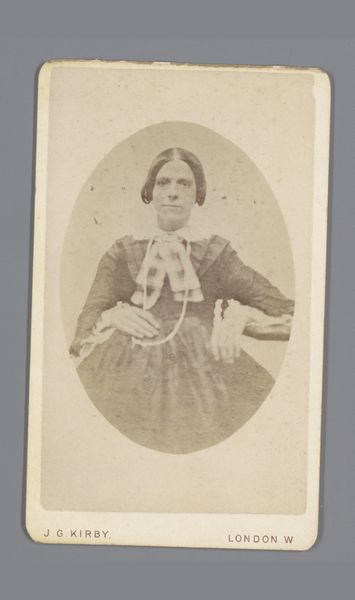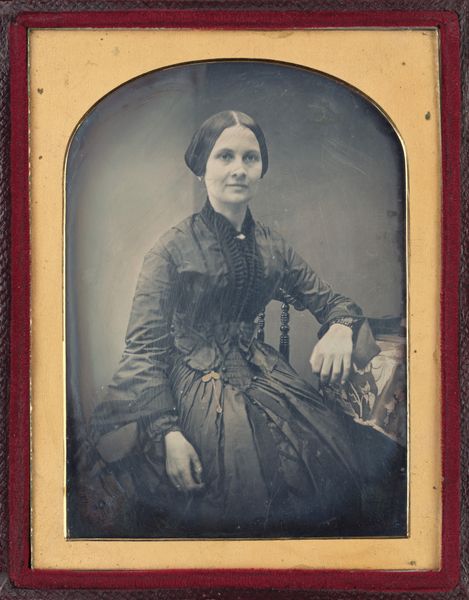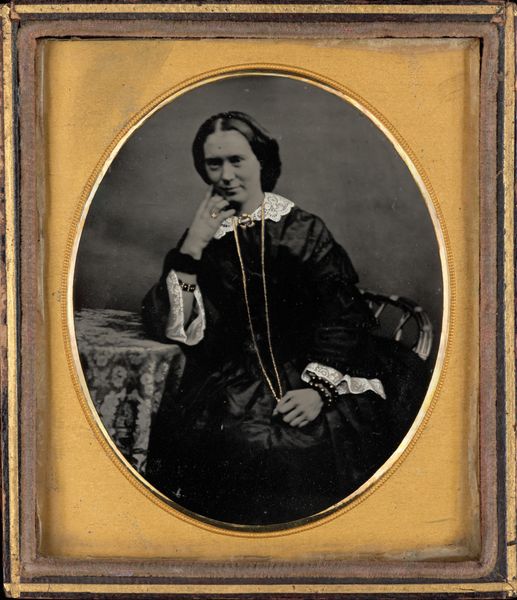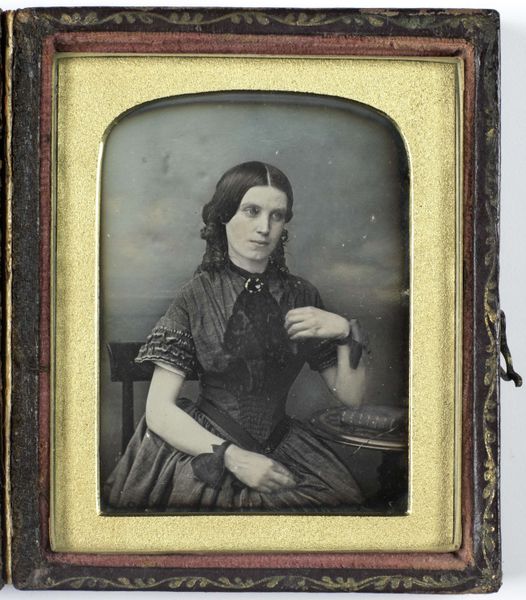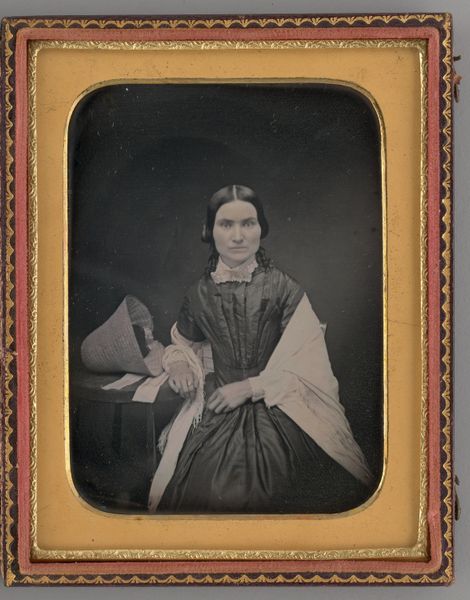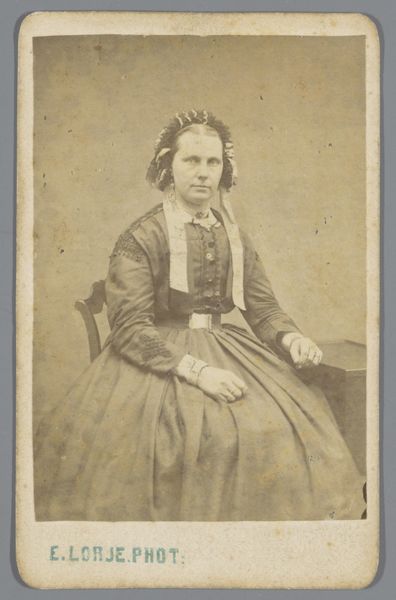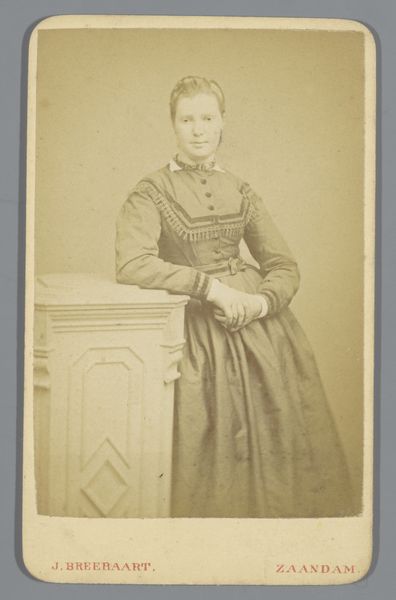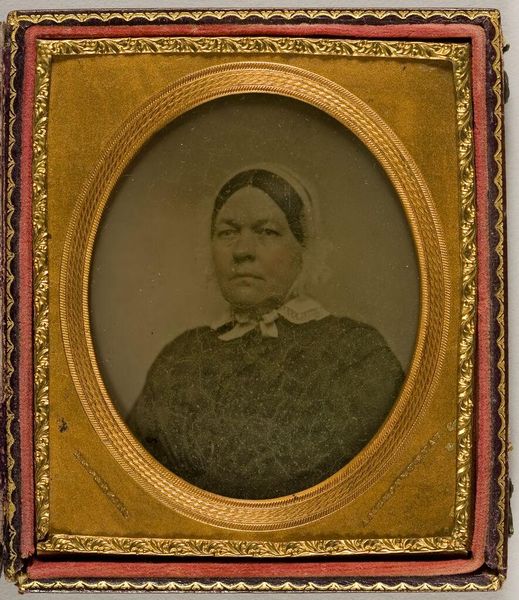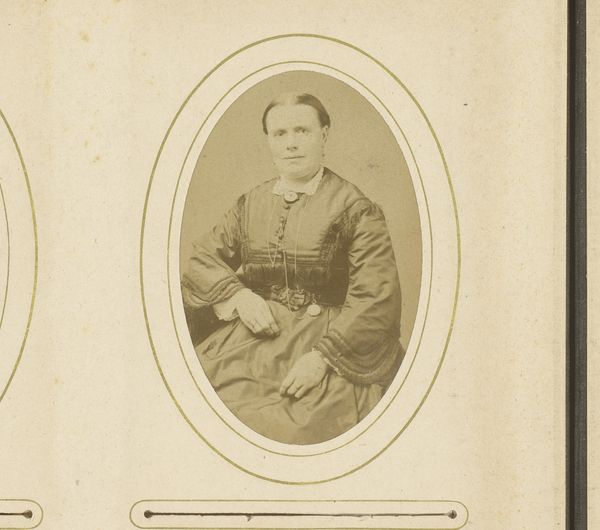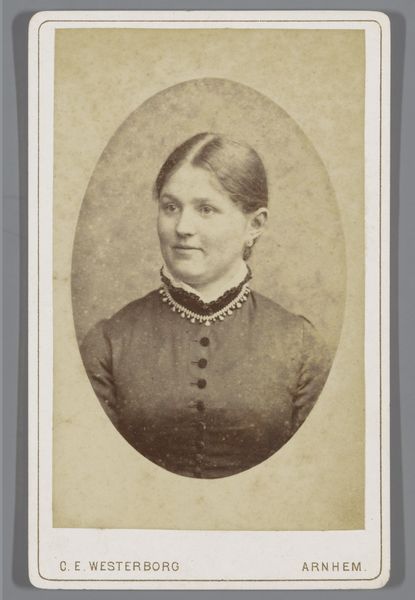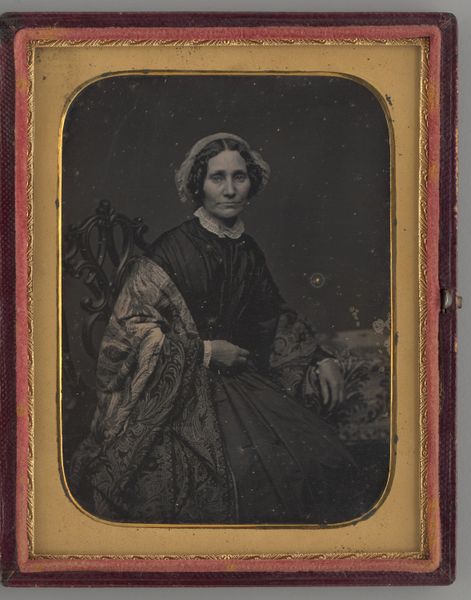
daguerreotype, photography
#
portrait
#
16_19th-century
#
daguerreotype
#
photography
#
realism
Dimensions: 8.2 × 7 × 0.7 cm
Copyright: Public Domain
Editor: This daguerreotype, titled "Untitled," comes from between 1839 and 1860, and is held at The Art Institute of Chicago. It's a fascinating glimpse into the past. What strikes me most is the subject's gaze—direct, unwavering, almost confrontational. What do you see in this piece, beyond just a formal portrait? Curator: I see a powerful statement about representation and agency in the mid-19th century. Consider the context: early photography was expensive and time-consuming. The subject, this woman, likely made a deliberate choice to be photographed, controlling her own image in a way previously reserved for the elite. Her clothing, though modest, speaks to a certain economic standing, a plaid pattern that subtly resists the expectations of simplicity. The plain background almost disappears and what matters is who is being represented: could we imagine what this meant in terms of empowerment for a woman to be able to express her self? Editor: That’s a perspective I hadn’t considered. I was so focused on the austerity of the image, but you're right, there’s a real power in that gaze, and her overall demeanor. The daguerreotype format itself, with its reflective surface, almost implicates the viewer, doesn't it? Curator: Absolutely! It becomes a mirror reflecting not only her image but our own gaze, our own biases. Who are we, looking at her? What assumptions do we bring to this encounter? Her lack of a discernible social signifier becomes interesting since she looks so 'common', but could have well-hidden ties. Editor: So, the work becomes a conversation, not just about her, but about us and the act of seeing. I initially viewed it as a simple historical document, but now I see it as a complex interaction across time. Thank you, I now look at photography through different lenses. Curator: Exactly! By understanding the socio-political context, we uncover the many layers of meaning embedded within even the seemingly simplest images. And that understanding allows us to engage in an evolving discourse around gender, race, and identity throughout the history of art.
Comments
No comments
Be the first to comment and join the conversation on the ultimate creative platform.
